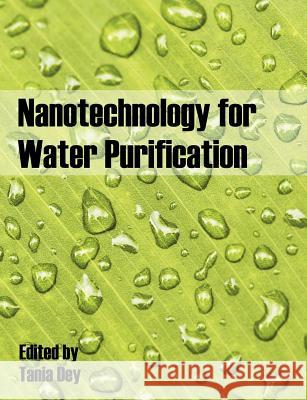Nanotechnology for Water Purification » książka
Nanotechnology for Water Purification
ISBN-13: 9781612336190 / Angielski / Miękka / 2012 / 260 str.
Nanotechnology is a highly inter- and multi- disciplinary application oriented research area. Not only does it find its use in nanomedicine, solar cells, sensor development and so on, but can also be effectively utilized to prevent water pollution. Nanostructured materials such as magnetic nanoparticles, carbon nanotubes, silver-impregnated cyclodextrin nanocomposites, nanostructured iron-zeolites, carbo-iron nanomaterials, photocatalytic titania nanoparticles, nanofiltration membranes and functionalized silica nanoparticles can be employed in water treatment to remove heavy metals, sediments, chemical effluents, charged particles, bacteria and other pathogens. This edited book comprises several review-style chapters written by world experts. The chapters are devoted to each of these nanotechnology based approaches: basic principles, practical applications, recent break-through and limitations associated with it. The last chapter covers the environmental risks of applying engineered nanomaterials for water purification. The wealth of information and insight offered in this book will be appealing to scientists and researchers over a wide range of disciplines.
Nanotechnology is a highly inter- and multi- disciplinary application oriented research area. Not only does it find its use in nanomedicine, solar cells, sensor development and so on, but can also be effectively utilized to prevent water pollution. Nanostructured materials such as magnetic nanoparticles, carbon nanotubes, silver-impregnated cyclodextrin nanocomposites, nanostructured iron-zeolites, carbo-iron nanomaterials, photocatalytic titania nanoparticles, nanofiltration membranes and functionalized silica nanoparticles can be employed in water treatment to remove heavy metals, sediments, chemical effluents, charged particles, bacteria and other pathogens. This edited book comprises several review-style chapters written by world experts. The chapters are devoted to each of these nanotechnology based approaches: basic principles, practical applications, recent break-through and limitations associated with it. The last chapter covers the environmental risks of applying engineered nanomaterials for water purification. The wealth of information and insight offered in this book will be appealing to scientists and researchers over a wide range of disciplines.











